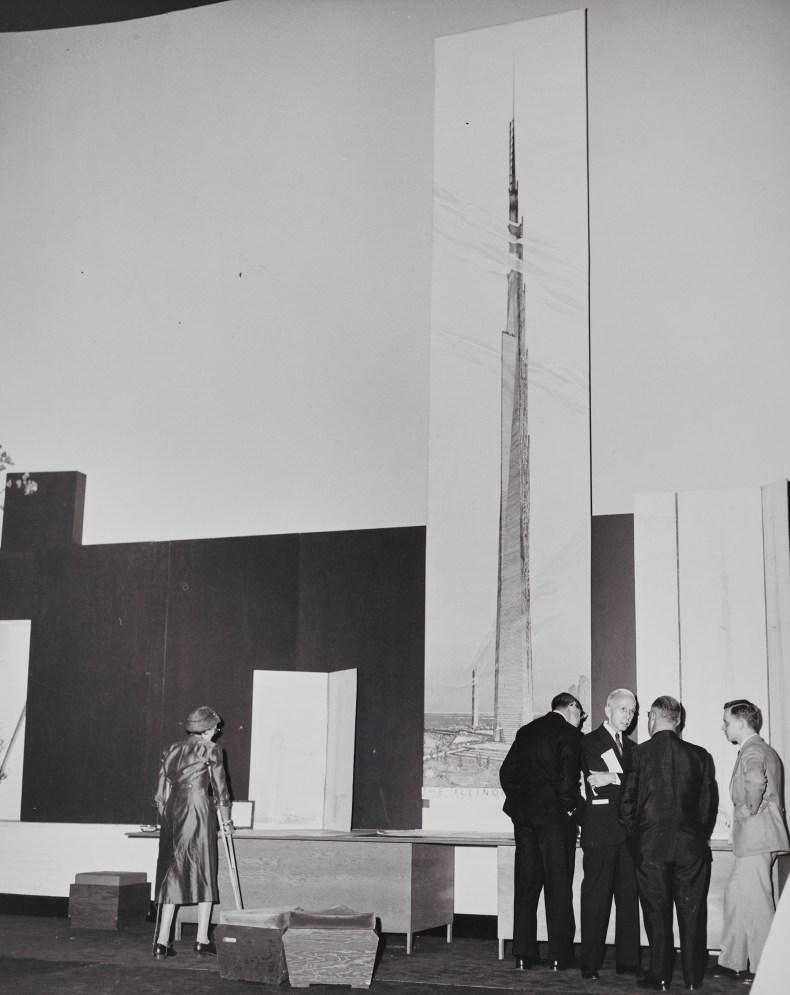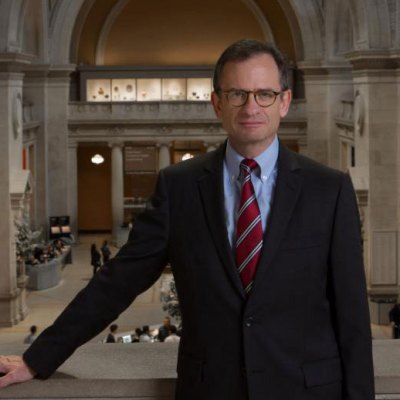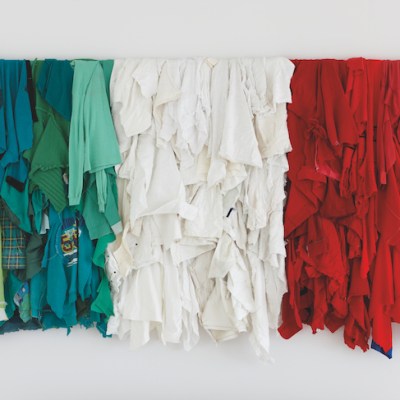The life and work of Frank Lloyd Wright has been thoroughly examined. He wrote 20 books (and countless articles) and if falling short of Le Corbusier, who notched up 50 or so titles under his own name (or names), they amplify Wright’s professional achievements as celebrated in innumerable exhibitions, monographs, scholarly, and general texts.
But the current exhibition at MoMA on the 150th anniversary of his birth is a coup. Based around the massive archive formerly held by the Frank Lloyd Wright Foundation and acquired by the museum and the Avery Library at Columbia the organisers had a cornucopia of material, film, models, photographs, drawings, and more, to hand. This material melds Wright’s work to his personality, his dreams to his schemes, his designs to his ambitions. It is a model of how to display architecture beyond the usual confines, done quietly and thoughtfully.
Frank Lloyd Wright unveiling the 6.7m-high visualisation of The Mile-High Illinois at a press conference in Chicago, 16 October 1956. The Frank Lloyd Wright Foundation Archives, New York

Without any obligation to linger on the troubled life and biography or to provide a full architectural retrospective, the curators, Barry Bergdoll and Jennifer Gray, shared responsibility for a dozen themed sections with a group of scholars (in and out of the museum), who chose objects and explore a key topic (explaining their choices and work in short, exemplary, pieces to camera). Faced with a phantasmagorical bran tub they range wide, including revealing yet little known projects, aspects of which highlight Wright’s involvement in topics such as the environment, racial, and social conflict, industry and the rural economy, even mass media. The core of the show, housed in newly redesigned galleries, is a set of drawings showing key schemes of Wright’s career, highlighting the draughtsmanship and influences that guided Wright and trusted assistants over the decades from early Chicago days to Taliesin West. After that, little is familiar.
Bergdoll and Gray worked on two topics. The former grapples with the final project of Wright’s career, the Mile-High Tower that, aged almost 90, he launched with a press conference on 16 October, 1956, in Chicago. At double the height of the current tallest building in the world (in Dubai), it soared to a scale unimaginable then or now. He showed it against a timeline of massive buildings (much like C.R. Cockerell’s capriccio The Professor’s Dream) and celebrated the names of pioneering engineers on the upper floors. Lodged on the final seven floors were television studios. Wright, by then unassailable and stellar within his profession, knew the possibilities of energetic public relations, of publicity through his own dapper figure and leonine features, the architect as superstar roaming his desert empire or pontificating from his television studios in the clouds. That same year he enjoyed taking part (as mystery guest) in What’s my Line and in 1957 talked, at length, to Mike Wallace – the doyen of television interviewers.
The ecology and landscape section is the responsibility of Gray working with Therese O’Malley. The various abortive schemes shown were, often, set in punishing regional terrain, desert and ravine, and used native planting. His collaboration with the highly political Friends of our Native Landscape group, and its founder, the landscape designer Jens Jensen, was fruitful if troubling. In an essay, discussing the symbolism behind the FONL symbol that Wright designed, Gray explores ‘nativism, conservation and land reform’ set alongside Wright’s commitment to the social responsibility of the citizen for the landscape, including resources (in particular water) and the rights of the indigenous population.
Model of Frank Lloyd’s Wright 1932–33 Farms Unit project for Walter V. Davidson. The Frank Lloyd Wright Foundation Archives

For the city, the 1926 Skyscraper Regulation project, a nine-block area of Chicago was the first of several megaprojects featured – including Pittsburgh and, more surprisingly, Baghdad – but the only one where he slips into the modernist slipstream, incurring bad relations with the founding fathers of MoMA. Other revelations include a radical, unfulfilled, scheme for the Rosenwald School, a self-build schools project for African Americans in the south, and the Little Farms Unit, an experimental early 1930s agricultural farm-to-market scheme. A thoughtful and exploratory exhibition, exactly as its title ‘Unpacking the Archive’ promised, it looks as if Frank Lloyd Wright has a great deal more to offer.
‘Frank Lloyd Wright at 150: Unpacking the Archive’ is at the Museum of Modern Art, New York, until 1 October.



